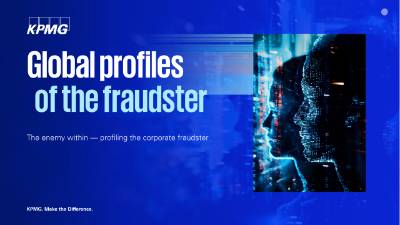The study highlights the evolving nature of corporate fraud and emphasizes that fraudsters tend to be long-standing, respected members of organizations, urging companies to strengthen internal controls and promote an ethical culture to effectively prevent and detect fraud.
Corporate fraud, often referred to as "white collar" crime, is a persistent and damaging problem that continues to make headlines and impact organizations worldwide. During my time with KPMG forensic services, I have witnessed firsthand the profound effects that fraud can have on companies, their employees, and society at large. The question that remains at the forefront of our efforts is: how can organizations better protect themselves against fraud, make it more difficult to commit, and detect it earlier?
To delve deeper into these critical challenges, KPMG conducted a detailed global survey to uncover the profile of the typical fraudster, understand their methods, and identify the organizational weaknesses they exploit.
As organizations navigate the complexities of corporate fraud, they need to take proactive steps to strengthen their defenses. This includes implementing robust internal controls, promoting an ethical culture, enhancing detection mechanisms, fostering collaboration and transparency, and adapting to technological changes. At KPMG firms, we are dedicated to helping clients address these challenges and achieve the best possible outcomes in their fight against fraud.
We invite you to explore the findings of our survey and consider the recommendations provided in this report. Together, we can work towards creating a more secure and trustworthy corporate environment.
The typical fraudster is often the most trusted person in the room: long-serving, respected, and seemingly beyond suspicion. That’s exactly why the Private Investigation Act is so timely: it forces companies to treat internal investigations not as a favour, but as a formal obligation, backed by clear rules, procedures, and accountability.
KPMG’s global fraud survey: key findings
- The typical fraudster is male, 36-55, highly respected, and long-serving
- The most common type of fraud is misappropriation of assets – notably embezzlement and procurement
- Fraud occurs across a range of departments including Operations, Finance, the CEO’s office, and Procurement
- Weak controls are considered the prime reason for the frauds
- The number one detection method is tip-offs via whistleblowers or informal sources
- Fifty-five percent of frauds involved collaboration – typically with a group of 2-5 people
About the survey
The survey is based on a questionnaire asking KPMG forensic professionals around the world for details about the fraudsters. The professionals filled in a detailed questionnaire on each fraudster, after investigating the case at the request of the organization affected. The investigation frequently involved interviewing the fraudster, helping KPMG to form a detailed picture of the perpetrator and the fraud committed. This report is based on an analysis of 256 fraud cases investigated by KPMG member firms over the past 5 years. As some cases involve more than one fraudster, based on the survey responses, at least 669 fraudsters are covered.
Key takeaways from our Global Fraud Webinar
Outsmarting fraudsters: practical strategies for organizations
1. Strengthen internal controls
- Introduce and enforce robust internal controls
- Establish clear limits on authority
2. Promote an ethical culture
- Encourage a “speak-up” culture
- Provide regular training on ethical behavior and fraud awareness
3. Enhance detection mechanisms
- Use advanced data analytics and fraud detection technologies
- Regularly review and update fraud prevention and detection strategies
4. Foster collaboration and transparency
- Promote transparency and collaboration across departments
- Conduct thorough background checks and continuously monitor for any abnormalities, suspicious activities, or deviations from standard procedures
5. Know your counterparty
- Undertake due diligence on third parties
- Periodically “check-in” with higher-risk third parties to confirm existence, business justification, and legitimacy of expenditures
6. Adapt to technology and changes
- Stay informed about the latest technology (such as AI) and their potential impact
- Invest in cybersecurity measures and train employees to recognize and respond to threats
Private Investigations Act
1. Assess organizational impact
- Evaluate the implications of the new law on your organization
- Identify affected departments
2. Update internal procedures
- Review and update policies and procedures
3. Draft internal regulation/policy
- Develop a clear and transparent internal policy that defines the circumstances under which a private investigation may be initiated and outlines the procedures for conducting it
- Ensure compliance by the December 2026 deadline
4. Forensic readiness
- Conduct a forensic readiness assessment
- Draft a forensic response plan
5. Partner with licensed experts
- Consider partnering with licensed professionals to ensure compliance and navigate complexities
Explore
Connect with us
- Find office locations kpmg.findOfficeLocations
- kpmg.emailUs
- Social media @ KPMG kpmg.socialMedia




